Exploration is not just “the essence of the human spirit”, like NASA astronaut Frank Borman once said, but essential to understand human nature. Just ask any expert conducting qualitative research. Pretty much like space pioneers explore the cosmos to understand how the universe works, researchers explore the underlying reasons, opinions, and motivations that explain human decisions to develop new ideas or hypotheses for further research.
Grasping different types of behaviours and perceptions regarding a multitude of topics is no easy task, and sometimes qualitative research will even involve dealing with emotions and personal opinions. This makes the whole process a lot more complex.
At a certain point, the researcher must step back, ditch the technical talk and focus on the human in front of them (or the human on the other side of the phone/computer). Qualitative research means gathering an in-depth understanding of the human behaviour and its reasons, so it is critical to deeply understand the human displaying the behaviour and create meaningful experiences for all users at a later stage of the development process.
🚀 Qualitative research and quantitative research
‘Qual’ research can be the first step (or one of the first steps) that researchers and designers take when diving head first into a new project.
With the development of so many different research tools, such as those offered by Optimal Workshop, research is increasingly becoming a sliding scale with qualitative research at one end, quantitative research at the other and no distinct line between the two. For example, a tree test can be conducted on a quantitative scale to validate early research and design on the navigation of a site. Alternatively, tree testing can be used as part of in-person lab-based qualitative usability testing to generate specific analytical data. The different research tools available increase the possibilities and allow for greater flexibility when planning and structuring research projects.
Of course, we live in the real world, where budgets and time constraints exist. A good alternative to in-person qualitative research that works well for smaller budgets and tighter deadlines are remote sessions that participants can take part in from home or work.
Remote research might be far from the utopian idea of observing a user in his or her environment and having the possibility to take notes or capture images in person, but getting some qualitative results from a distance is better than getting zero.
With all the possibilities on the table and having made decisions based on budgets and schedules, the next thing to consider are the participants.
🚀 High quality participants = high quality feedback
There is often a misconception that qualitative has a strong link to quality and, therefore, quantitative perhaps lacks quality. To People for Research, quality recruitment means recruiting relevant participants and getting relevant feedback, whether we are talking about qualitative and quantitative research.
Conducting ‘qual’ or ‘quant’ research with the wrong audience is not an effective use of your budget or time, as someone who doesn’t have a genuine need for your product or service is unlikely to find themselves on your website. Therefore, the first step is to consider what level of screening is required to ensure your test content will be relevant to the users you are researching with. Can this be done as part of the test? Or, do you need to screen participants before including them in your research?
Many online user research and testing tools, like Optimal Workshop, allow you to source your own participants through your own channels. Alternatively, dedicated recruitment companies like People for Research can provide a more thorough screening process to source people with specific behaviours, or harder to reach groups of people such as business owners.
🚀 The importance of good data visualisation
Running qualitative research can look easy on paper, but in reality, doing a good job is tough. There are participants to recruit, research to carry out, project goals to meet, and stakeholders to satisfy. At the end of it all, you need to analyse your results and make them easily digestible.
So, how do you run successful qualitative research sessions? And how do you turn your results into something people will understand and pay attention to?
🚀 Running qualitative research
1. Planning
When you’ve picked the qualitative research method that’s best suited to your project, you need to plan how to carry it all out. There are a few things that will affect how you conduct your research: the who, what, where, when, and how.
Who will be your research participants and how are you going to find and recruit them? Will these people participate remotely or in-person? Who is going to attend your sessions with you? Where will your sessions be held? When will they be held, and how often? What do you want to find out? How will you collect data? Once you have answered all these questions, you can start scheduling your research sessions.
In the lead-up to your research sessions, it’s a good idea to give your participants a friendly reminder. People can be forgetful or lose interest, especially if they’re participating for free. You may want to send out an email a couple of days beforehand to let them know when your session is, where it’s being held, what they need to bring/do and roughly how long it will last.
2. Running your research — remote and in-person
Remote and in-person research have their differences, and it’s important you’re aware of this before you begin your sessions.
Remember that remote participants are not in the room with you. This means you can’t see their body language, which can be a very good indicator of what they’re thinking or feeling. Set up video calling software so you can see participants face-to-face and record it to watch again later. This can especially come in handy if you’re conducting remote usability testing, as you’ll want to see what your participants are doing during the test.
If your participants are coming to meet you in person, make sure you pick a place that’s quiet, has minimal distractions, and has the right setup you need to get the job done (e.g., power points, WiFi, coffee etc). Bring a note taker with you so you’re not spending the whole time scribbling notes down instead of engaging with your participant.
Whether your research is going to be remote or in person, make sure your participants feel comfortable during the entire session. Before you begin, give them a quick run-down of who you are, what’s involved, what they need to do, and any other important details. If you build a bit of a rapport, you’ll yield some good results.
3. Gathering information from qualitative research
Research observations are the snippets of information you get from qualitative research. They can describe events, behaviours, information about the setting in which the session is being held, noises — anything that you see or hear that’s relevant to your research in some way. For example, in a usability test you may note down that the participant struggled to find a way to reset their password.
Qualitative research is a good way to understand what people are thinking and feeling. However, this type of research also gives you a lot of data to analyse, which can be overwhelming and time-consuming to work through. So how do you make sense of it all?
4. The importance of good data visualisation
In order to make your research findings more understandable to others, you’ll need to put your savvy data visualisation skills to use.
Data visualisations can make large quantities of data more accessible and digestible — a crucial factor when you’re presenting your research findings to colleagues or project stakeholders. They can also help people absorb information in constructive ways, and allow people to identify trends quickly.
If you’re doing any first-click testing, tree testing, user interviews, or card sorting through Optimal Workshop’s tools, the data visualisations within the tools are easy to understand. However, if you want to create a more customised overview of your data, here are some key things to keep in mind:
👨 Determine who your audience is. Are you presenting findings to high-level executives, designers, other researchers or someone else? This will help you figure out what kind of data to include.
🧠 Keep visualisations simple. You want to include a lot of information, but you don’t want to overload people with complex designs that are hard to interpret.
✍️ Focus on the most powerful data and make these parts stand out visually.
🌈 Use storytelling to help communicate your data.
💬 Mix up some of the visualisations so you’re not using the same kind over and over again. You may even want to break up some of it with quotes from research participants.
5. Generating meaningful experiences that make users want to come back
Creating meaningful experiences for people is hard work, but ultimately, it’s something that will benefit you immensely in the long-run. The best way to learn how to create these meaningful experiences for your users is to talk to them. Use quantitative research to understand more about your demographic as a whole and figure out who they are. Understand what they like or dislike, how they behave, what they think and why through qualitative research methods.
Remember that the higher quality of your participants, the higher quality your responses will be. Use a targeted participant recruitment service to tap into the right kinds of people you need for your project to capture relevant insights.
6. Don’t forget to test and iterate
Once your research project is done and dusted, make sure you test your proposed changes or prototypes before investing time to fully implement them. Moderated user testing is great to use in this scenario, as it allows you to understand your users’ behaviour and thoughts while using your prototype. You can use the results from these user testing sessions to compare with your earlier research — are things better and easier to use? Are the same problems still there? Or have things become worse?
If the same issues are still there or if everything has become worse, you’ll need to take a step back and iterate upon your research and design.
Remember, iteration is key to helping you create the most meaningful experiences for your users, so don’t give up!
If you would like to find out more about our in-house participant recruitment service for user testing or market research get in touch on 0117 921 0008 or info@peopleforresearch.co.uk.
At People for Research, we recruit participants for UX and usability testing and market research. We work with award winning UX agencies across the UK and partner up with a number of end clients who are leading the way with in-house user experience and insight.


